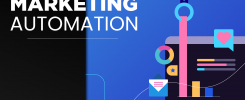SUPERCHARGE YOUR Online VISIBILITY! CONTACT US AND LET’S ACHIEVE EXCELLENCE TOGETHER!
In today’s digital age, search engines play a pivotal role in connecting users with the information they seek. Understanding how search engines work and how they index web pages is vital for website owners, content creators, and marketers alike. This comprehensive guide will delve into the intricacies of crawling and indexing, shedding light on the secrets of search engines.
Understanding Search Engine Crawling
What is Web Crawling?
Web crawling, often referred to as “spidering” or “bot crawling,” is the process by which search engines discover and gather information from web pages. Search engine bots, also known as crawlers or spiders, systematically navigate through the vast expanse of the internet, following links from one page to another.
How Crawlers Discover New Pages
Search engine crawlers start by visiting a few known web pages. From these seed pages, they extract links to other pages and continue this process recursively. As a result, the entire web becomes interconnected, allowing search engines to find and index an ever-increasing number of pages.
Importance of Crawl Budget
Crawl budget refers to the number of pages a search engine’s crawler is willing to crawl on a website within a specific timeframe. It is crucial for website owners to understand crawl budget allocation, as it directly impacts how efficiently their pages get indexed.
The Role of Robots.txt
The robots.txt file serves as a guide for web crawlers, indicating which pages or sections of a website they should or should not crawl. Properly configuring the robots.txt file is essential to prevent sensitive or irrelevant pages from being indexed.
Enhancing Crawling with Sitemaps
Creating an XML Sitemap
XML sitemaps provide search engines with a roadmap of a website’s structure, making it easier for crawlers to discover and understand its content. Website owners can generate XML sitemaps and submit them to search engines for better indexing.
Submitting Sitemaps to Search Engines
Once a sitemap is created, it should be submitted to major search engines like Google and Bing through their respective webmaster tools. This step ensures that the search engines are aware of the sitemap’s existence and can prioritize crawling accordingly.
Dealing with Duplicate Content
Causes and Consequences
Duplicate content can harm a website’s SEO efforts as search engines may struggle to determine which version of the content to index. It’s essential to identify and resolve duplicate content issues promptly.
Canonicalization Techniques
Implementing canonical tags helps inform search engines about the preferred version of a page, eliminating confusion and consolidating link equity to the correct URL.
Mobile Crawling and Responsive Design
With the increasing use of mobile devices, search engines now prioritize mobile-friendly websites. Ensuring that your website has a responsive design is crucial for proper mobile crawling and indexing.
Handling JavaScript and CSS
Search engine crawlers have evolved to handle JavaScript and CSS, but challenges still exist. Understanding how crawlers interpret these elements can help ensure that critical content is visible and indexable.
Indexing: From Crawled Pages to Search Results
After crawling, search engines process the collected data and add the pages to their index—a vast database of web pages. This index serves as the foundation for providing search results in response to user queries.
Factors Affecting Indexing
Various factors influence how search engines prioritize and rank pages in their index. Website owners can optimize their pages for better indexing and visibility by considering these factors:
Quality and Relevance of Content
Creating high-quality, relevant, and valuable content is essential for search engine visibility and user satisfaction.
Website Speed and Performance
Fast-loading websites are more likely to be indexed and rank higher in search results.
Mobile-Friendly Websites
Mobile-friendly websites are prioritized in mobile search results, given the increasing number of mobile users.
Troubleshooting Crawling and Indexing Issues
Using Google Search Console
Google Search Console provides valuable insights into how Google’s crawlers view and index a website. It also offers tools to diagnose and resolve crawling and indexing problems.
Crawl Errors and Solutions
Identifying and fixing crawl errors, such as broken links or server errors, is crucial for efficient indexing.
Fetch and Render Tool
Google’s Fetch and Render tool helps webmasters visualize how Googlebot sees and renders their pages, aiding in understanding and troubleshooting potential issues.
Crawl Budget Optimization Strategies
Eliminating Unnecessary Pages
Identifying and eliminating redundant or low-value pages from the website can free up crawl budget for more critical pages.
Setting Crawl Priorities
Website owners can prioritize specific sections or pages to guide search engine crawlers to focus on essential content.
Future of Crawling and Indexing
Mobile-First Indexing
Search engines are increasingly adopting mobile-first indexing, prioritizing mobile versions of websites in their ranking algorithms.
AI and Machine Learning
The integration of AI and machine learning in search algorithms is expected to revolutionize the way search engines crawl, index, and rank web pages.
Conclusion
Understanding the intricacies of crawling and indexing is paramount for anyone looking to succeed in the digital realm. By optimizing websites for search engine crawlers and ensuring efficient indexing, businesses and individuals can harness the power of search engines to reach their target audiences effectively.

Thatware | Founder & CEO
Tuhin is recognized across the globe for his vision to revolutionize digital transformation industry with the help of cutting-edge technology. He won bronze for India at the Stevie Awards USA as well as winning the India Business Awards, India Technology Award, Top 100 influential tech leaders from Analytics Insights, Clutch Global Front runner in digital marketing, founder of the fastest growing company in Asia by The CEO Magazine and is a TEDx speaker and BrightonSEO speaker..


